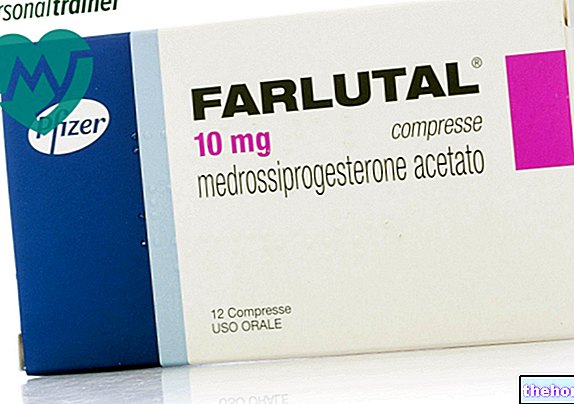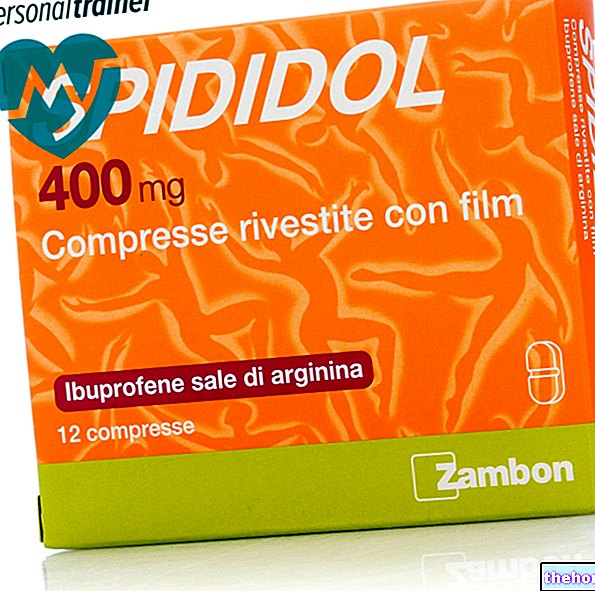Active ingredients: Linaclotide
Constella 290 micrograms hard capsules
Indications Why is Constella used? What is it for?
Constella contains the active substance linaclotide. It is used to treat symptoms of moderate to severe irritable bowel syndrome (often simply called "IBS") with constipation in adult patients.
IBS is a common intestinal disorder. The main symptoms of IBS with constipation include:
- abdominal or stomach pain,
- bloated feeling,
- infrequent defecation with hard, small or ball-like stools.
These symptoms can vary from person to person.
How Constella works
Constella acts locally in your intestines, helping to relieve pain and swelling and restore normal bowel functioning. It is not absorbed by the body but binds to the guanylate cyclase C receptor on the surface of the intestine. By binding to this receptor, it blocks the sensation of pain and allows the liquid to enter the intestine from the body, thus softening the stool and increasing bowel movements.
Contraindications When Constella should not be used
Don't take Constella
- If you are allergic to linaclotide or any of the other ingredients of this medicine
- If you or your doctor know that you have stomach or intestinal blockage.
Precautions for use What you need to know before taking Constella
Your doctor has prescribed this medicine for you after ruling out other conditions, especially bowel conditions and after concluding that you have IBS with constipation. Since these other conditions may have the same symptoms as IBS, it is important that you communicate promptly to the doctor for any changes or irregularities in symptoms.
If you have severe or prolonged diarrhea (frequent liquid stools for 7 days or more), stop taking Constella and contact your doctor. Make sure you take plenty of fluids to compensate for the loss of fluids and electrolytes such as potassium due to diarrhea.
Take special care if you are over 65 years of age, as you are at an increased risk of developing diarrhea.
Also, be especially careful if you experience severe or prolonged diarrhea and have an additional medical condition such as hypertension, previous heart and blood vessel disease (eg previous heart attacks) or diabetes.
Talk to your doctor if you have intestinal inflammation such as Crohn's disease or ulcerative colitis, as Constella is not recommended in these patients
Children and adolescents
Do not administer to children and adolescents under 18 years of age as the safety and efficacy of Constella in this age group has not been established.
Interactions Which drugs or foods can modify the effect of Constella
Tell your doctor or pharmacist if you are taking, have recently taken or might take any other medicines.
- Some medicines do not work effectively in case of severe or prolonged diarrhea, such as:
- Oral contraceptives: In case of severe diarrhea, the effectiveness of oral contraceptives may be reduced and the use of another method of contraception is recommended. Read the package leaflet of the oral contraceptive you are taking
- Medicines that require precise and accurate dosing, such as levothyroxine (a hormone to treat reduced function of the thyroid gland)
- Some medicines may increase the risk of diarrhea when taken with Constella, such as:
- Medicines to treat stomach ulcers or excessive acid production in the stomach, called proton pump inhibitors
- Medicines to treat pain and inflammation, called NSAIDs
- Laxatives
Constella with foods
Constella produces more frequent bowel movements and diarrhea (looser stools) when taken with food than when taken on an empty stomach
Warnings It is important to know that:
Pregnancy and breastfeeding
There are limited data from the use of Constella in pregnant or lactating women.
Do not take this medicine if you are pregnant, suspect or are planning to become pregnant, unless your doctor tells you to.
Do not take Constella if you are breastfeeding, unless your doctor tells you to.
Driving and using machines
Constella does not affect the ability to drive or use machines.
Dose, Method and Time of Administration How to use Constella: Posology
Always take this medicine exactly as your doctor has told you. If in doubt, consult your doctor or pharmacist.
The recommended dose is one capsule once a day. The capsule should be taken at least 30 minutes before a meal.
Overdose What to do if you have taken too much Constella
If you take more Constella than you should
The most likely effect if you take more Constella than you should is diarrhea. Contact your doctor or pharmacist if you have taken more medicine than you should.
If you forget to take Constella
Do not take a double dose to make up for a forgotten dose. Take your next dose at the scheduled time and continue as usual.
If you stop taking Constella
Before stopping treatment it is preferable to discuss this with your doctor. However, Constella treatment can be safely stopped at any time.
If you have any further questions on the use of this medicine, ask your doctor or pharmacist
Side Effects What are the side effects of Constella
Like all medicines, this medicine can cause side effects, although not everybody gets them.
Very common side effects (may affect more than 1 in 10 people)
- diarrhea
Diarrhea is usually short-lived; if, however, you experience severe or prolonged diarrhea (frequent liquid stools for 7 days or more) and feel dizzy, lightheaded or faint, stop Constella and contact your doctor.
Common side effects (may affect up to 1 in 10 people)
- abdominal or stomach pains
- bloated feeling
- air
- gastrointestinal flu (viral gastroenteritis)
- feeling dizzy
Uncommon side effects (may affect up to 1 in 100 people)
- lack of control in defecating (fecal incontinence)
- urgency to defecate
- feeling lightheaded on standing up quickly
- dehydration
- reduced level of potassium in the blood
- reduced appetite
Rare side effects (may affect up to 1 in 1,000 people)
- reduction of bicarbonate in the blood
Undesirable effects of unknown frequency
- rash
Reporting of side effects
If you get any side effects, talk to your doctor or pharmacist. This includes any possible side effects not listed in this leaflet. You can also report side effects directly via the national reporting system listed in Appendix V. By reporting side effects you can help provide more information on the safety of this medicine.
Expiry and Retention
Keep this medicine out of the sight and reach of children.
Do not use this medicine after the expiry date which is stated on the carton and bottle after "EXP". The expiry date refers to the last day of that month.
Once the bottle is opened, the capsules must be used within 18 weeks.
Do not store above 30ºC. Keep the bottle tightly closed to protect it from moisture.
Warning: The bottle contains one or more sealed containers containing silica gel to keep the capsules dry. Keep these containers in the bottle. Do not ingest them.
Do not use this medicine if you notice any signs of deterioration on the bottle or any change in the appearance of the capsules.
Do not throw any medicines via wastewater or household waste. Ask your pharmacist how to throw away medicines you no longer use. This will help protect the environment.
What Constella contains
- The active ingredient is linaclotide. Each capsule contains 290 micrograms of linaclotide.
- The other ingredients are:
Capsule contents: microcrystalline cellulose, hypromellose, calcium chloride dihydrate and leucine.
Capsule shell: red iron oxide (E172), titanium dioxide (E171), yellow titanium oxide (E172) and gelatin.
Capsule ink: shellac, propylene glycol, concentrated ammonia solution, potassium hydroxide, titanium dioxide (E171) and black iron oxide (E172).
What Constella looks like and contents of the pack
Constella capsules are white to orange-white opaque hard capsules, marked "290" with gray ink.
They are packaged in a white, high-density polyethylene (HDPE) bottle with a tamper evident seal and child resistant cap, along with one or more desiccant containers containing silica gel.
Each bottle contains 10, 28, 60 or 90 capsules. Not all pack sizes may be marketed.
Source Package Leaflet: AIFA (Italian Medicines Agency). Content published in January 2016. The information present may not be up-to-date.
To have access to the most up-to-date version, it is advisable to access the AIFA (Italian Medicines Agency) website. Disclaimer and useful information.
01.0 NAME OF THE MEDICINAL PRODUCT
CONSTELLA 290 mcg HARD CAPSULES
▼ Medicinal product subject to additional monitoring. This will allow the rapid identification of new safety information. Healthcare professionals are asked to report any suspected adverse reactions. See section 4.8 for information on how to report adverse reactions.
02.0 QUALITATIVE AND QUANTITATIVE COMPOSITION
Each capsule contains 290 mcg of linaclotide.
For the full list of excipients, see section 6.1.
03.0 PHARMACEUTICAL FORM
Hard capsule.
White to white-orange opaque capsule (18 mm x 6.35) marked "290" with gray ink.
04.0 CLINICAL INFORMATION
04.1 Therapeutic indications
Constella is indicated for the symptomatic treatment of moderate to severe irritable bowel syndrome with constipation (IBS-C) in adults.
04.2 Posology and method of administration
Dosage
The recommended dose is one capsule (290 mcg) once a day.
Physicians should periodically assess the need for continued treatment.The efficacy of linaclotide has been established in double-blind placebo-controlled studies of up to 6 months duration. If patients do not experience improvement in their symptoms after 4 weeks of treatment, the patient should be re-visited and the benefit reconsidered. and the risks of continuing treatment.
Special populations
Patients with renal or hepatic insufficiency
No dose adjustments are required in patients with hepatic or renal insufficiency (see section 5.2).
Elderly patients
For elderly patients, although no dose adjustments are required, treatment should be carefully monitored and periodically reassessed (see section 4.4).
Pediatric population
The safety and efficacy of linaclotide in children aged 0 to 18 has not yet been established. No data are available.
Constella must not be used in children and adolescents (see sections 4.4 and 5.1).
Method of administration
For oral use. The capsule should be taken at least 30 minutes before a meal (see section 4.5).
04.3 Contraindications
Hypersensitivity to linaclotide or to any of the excipients listed in section 6.1.
Patients with known or suspected mechanical gastrointestinal obstruction.
04.4 Special warnings and appropriate precautions for use
Constella should only be used where organic disorders have been ruled out and a diagnosis of moderate to severe IBS-C has been established (see section 5.1).
Patients should be aware of the possible occurrence of diarrhea during treatment. They should also be advised to inform their doctor in case of severe or prolonged diarrhea (see section 4.8).
If prolonged (eg, for more than a week) or severe diarrhea occurs, temporary discontinuation of linaclotide should be considered until the diarrhea episode resolves and medical attention should be sought. Particular caution should be exercised. in patients prone to fluid or electrolyte disturbances (eg, the elderly, patients with CV disease, diabetes, hypertension), and consider electrolyte control.
Linaclotide has not been studied in patients with chronic inflammatory conditions of the intestinal tract, such as Crohn's disease or ulcerative colitis; therefore the use of Constella in these patients is not recommended.
Elderly patients
There are limited data in elderly patients (see section 5.1). Due to the increased risk of diarrhea observed in clinical trials (see section 4.8), special attention should be paid to these patients and the benefit-risk ratio must be carefully and periodically evaluated.
Pediatric population
Constella should not be used in children and adolescents because it has not been studied in this population. Since the GC-C receptor is known to be overexpressed at a very young age, children under 2 years of age may be particularly sensitive to the effects of linaclotide.
04.5 Interactions with other medicinal products and other forms of interaction
Drug-drug interaction studies have not been conducted. Linaclotide is rarely detectable in plasma following administration of the recommended clinical doses and studies in vitro demonstrated that linaclotide is neither a substrate nor an inhibitor / inducer of the cytochrome P450 enzyme system and does not interact with a number of common efflux and uptake transporters (see section 5.2).
A clinical food interaction study in healthy subjects demonstrated that linaclotide at therapeutic doses was undetectable in plasma under both fed and fasted conditions. Taking Constella on a full stomach caused more frequent bowel movements with loose stools, as well as more gastrointestinal adverse events, compared to taking in the fasted state (see section 5.1). The capsule should be taken 30 minutes before a meal (see section 4.2).
Concomitant treatment with proton pump inhibitors, laxatives or NSAIDs may increase the risk of diarrhea.
In case of severe or prolonged diarrhea, it may affect the absorption of other oral medicines. The efficacy of oral contraceptives may be reduced and the use of an additional method of contraception is recommended to prevent possible failure of oral contraception ( see package leaflet for oral contraceptive.) Caution should be exercised when prescribing medicinal products absorbed in the intestinal tract with a narrow therapeutic index such as levothyroxine, as their efficacy may be reduced.
04.6 Pregnancy and lactation
Pregnancy
There are limited data on the use of linaclotide in pregnant women. Animal studies do not indicate direct or indirect harmful effects with respect to reproductive toxicity (see section 5.3). As a precautionary measure, it is preferable to avoid use during pregnancy.
Feeding time
Since systemic exposure to linaclotide is minimal, excretion into breast milk is unlikely, although this has not yet been evaluated. Although no effects on breastfed newborns / infants have been observed at therapeutic doses, in the absence of human data, use during lactation is not recommended.
Fertility
Animal studies show that there is no effect on male and female fertility.
04.7 Effects on ability to drive and use machines
Constella has no or negligible influence on the ability to drive or use machines.
04.8 Undesirable effects
Summary of the safety profile
Linaclotide was administered orally to 1,166 patients with IBS-C in controlled clinical trials. Of these patients, 892 received linaclotide at the recommended dose of 290 micrograms per day. The total exposure in the clinical development plan exceeded 1,500 patient-years. The most frequently reported adverse reaction with Constella therapy was diarrhea, generally mild to moderate in intensity, occurring in less than 20% In rare and particularly severe cases this could, consequently, lead to the onset of dehydration, hypokalaemia, decreased blood bicarbonate, dizziness, and orthostatic hypotension.
Other common adverse reactions (> 1%) were abdominal pain, abdominal distension and flatulence.
Table of adverse reactions
In controlled clinical trials, at the recommended dose of 290 mcg per day, the following adverse reactions were reported with frequencies corresponding to: very common (≥1 / 10), common (≥1 / 100,
Description of selected adverse reactions
Diarrhea is the most frequent adverse reaction and is compatible with the pharmacological action of the active ingredient. In clinical studies, 2% of treated patients experienced severe diarrhea and 5% of patients discontinued due to diarrhea .
Most reported cases of diarrhea were mild (43%) to moderate (47%) in intensity; 2% of treated patients had severe diarrhea. About half of the diarrhea episodes started during the first week of treatment.
In about one third of the patients, the diarrhea resolved within seven days; however, in 80 patients (50%), the duration of diarrhea was over 28 days (representing 9.9% of all patients treated with linaclotide).
In clinical trials, five percent of patients discontinued treatment due to diarrhea. In patients whose diarrhea led to discontinuation of treatment, it resolved within a few days of discontinuation of treatment.
Elderly (> 65 years), hypertensive and diabetic patients reported diarrhea more frequently than the general IBS-C population included in the clinical trials.
Reporting of suspected adverse reactions
Reporting of suspected adverse reactions occurring after authorization of the medicinal product is important as it allows continuous monitoring of the benefit / risk balance of the medicinal product. Healthcare professionals are asked to report any suspected adverse reactions via the national reporting system. "address https://www.aifa.gov.it/content/segnalazioni-reazioni-avverse.
04.9 Overdose
An overdose may cause symptoms resulting from an excess of the known pharmacodynamic effects of the medicinal product, mainly diarrhea. In a study in healthy volunteers who received a "single dose of 2,897 mcg (up to 10 times the recommended therapeutic dose), the safety profile in these subjects was consistent with that of the general population, with diarrhea being the most significant adverse event. commonly referred to.
Should an overdose occur, the patient should be treated symptomatically and, if necessary, supportive measures should be taken.
05.0 PHARMACOLOGICAL PROPERTIES
05.1 Pharmacodynamic properties
Pharmacotherapeutic group: other drugs for constipation.
ATC code: A06AX04.
Mechanism of action
Linaclotide is a guanylate cyclase C (GC-C) receptor agonist with visceral and secretory analgesic activity.
Linaclotide is a synthetic 14 amino acid peptide structurally related to the endogenous guanyline peptide family. Both linaclotide and its active metabolite bind to the GC-C receptor on the luminal surface of the intestinal epithelium. Through its action at the GC-C level, linaclotide has been shown to reduce visceral pain and increase gastrointestinal transit. in animal models and increase colon transit in humans. Activation of GC-C causes increased concentrations of cyclic guanosine monophosphate (cGMP), both at the extracellular and intracellular levels. Extracellular cGMP decreases the activity of pain fibers, reducing visceral pain in animal models. Intracellular cGMP induces the secretion of chloride and bicarbonate in the intestinal lumen, through the activation of the cystic fibrosis transmembrane conductance regulator (CFTR), which involves the increase of intestinal fluid and the acceleration of transit.
Pharmacodynamic effects
In a food cross-interaction study, Constella 290 mcg was administered for 7 days in both fasted and fed conditions to 18 healthy subjects. Taking Constella immediately after a very fatty breakfast caused more frequent bowel movements with loose stools, as well as more gastrointestinal adverse events, compared to taking it on an empty stomach.
Clinical efficacy and safety
The efficacy of linaclotide was established in two randomized, double-blind, placebo-controlled, phase III clinical trials in patients with IBS-C. In one clinical study (study 1), 802 patients were treated with Constella 290 mcg or placebo once daily for 26 weeks. In the second clinical study (study 2), 800 patients were treated for 12 weeks and then re-randomized for an additional 4-week treatment period. During the pre-treatment baseline period of 2 weeks, patients had a mean abdominal pain score of 5.6 (on a scale of 0 to 10) with 2.2% abdominal pain-free days, a mean bloating score of 6.6 (on a scale of 0 to 10) and an average of 1.8 spontaneous bowel movements (SBM) / week.
The characteristics of the patient population included in the phase III clinical trial were as follows: mean age of 43.9 years [aged 18-87 years with 5.3% ≥ 65 years of age], 90.1% of sex female. All patients met the Rome II criteria for IBS-C and were required to report a mean abdominal pain score of ≥ 3 on a numerical rating scale of 0 to 10 points (criteria corresponding to a population with moderate to severe IBS ),
The co-primary endpoints in both clinical trials were IBS response rate with relief at 12 weeks and abdominal pain / malaise response rate at 12 weeks. IBS response rate with relief corresponded to a patient who was considerably or completely relieved of pain for at least 50% of the treatment period; a response with abdominal pain / discomfort corresponded to a patient with an improvement of 30% or more for at least 50% of the treatment period.
For the 12-week data, study 1 shows that 39% of the linaclotide-treated patients versus 17% of the placebo-treated patients showed a response to the degree of relief for IBS (p
For data at 26 weeks, study 1 shows that 37% and 54% of patients treated with linaclotide compared with 17% and 36% of patients treated with placebo showed a response to the degree of relief for IBS ( p
In both studies, these improvements were seen by week 1 and were maintained throughout the treatment period. Linaclotide was not shown to cause rebound effect when treatment was stopped after 3 months of constant treatment.
The other signs and symptoms of IBS-C including swelling, frequency of complete spontaneous bowel movements (CSBM), tension, fecal consistency, improved in linaclotide-treated patients compared to placebo-treated patients (p
Effect of Constella on IBS-C symptoms during the first 12 weeks of treatment across Phase 3 clinical efficacy studies (Studies 1 and 2).
* p
CSBM: Complete spontaneous bowel movement
Linaclotide treatment also produced significant improvements in disease-specific validated Quality of Life (IBS-QoL; p 14 points difference) was achieved in 54% of linaclotide-treated patients compared with 39% of treated patients. with placebo.
Pediatric population
The European Medicines Agency has deferred the obligation to submit the results of clinical studies with Constella in one or more subsets of the pediatric population in functional constipation. See section 4.2 for information on pediatric use.
05.2 "Pharmacokinetic properties
Absorption
Generally, linaclotide is minimally detectable in plasma following oral therapeutic doses and therefore standard pharmacokinetic parameters cannot be calculated.
Following single doses up to a maximum of 966 micrograms and multiple doses of up to 290 micrograms of linaclotide, no plasma levels of the parent compound or the active metabolite (des-tyrosine) were detected. When 2,897 mcg was administered on day 8, following a dosing of 290 mcg / day for a period of 7 days, linaclotide was detectable in only 2 of 18 subjects at concentrations just above the lower limit of quantification of 0 , 2 ng / mL (concentrations ranged from 0.212 to 0.735 ng / mL). In the two pivotal phase III studies, in which patients were treated with 290 micrograms of linaclotide once daily, linaclotide was detected in only 2 of 162 patients approximately 2 hours after the initial linaclotide dose (concentrations ranged from 0.241 ng / mL to 0.239 ng / mL) and in none of the 162 patients after 4 weeks of treatment. The active metabolite was never detected in any of the 162 patients.
Distribution
Since linaclotide is rarely detectable in plasma following therapeutic doses, standard distribution studies have not been conducted. Distribution of linaclotide is expected to be negligible or non-systemic.
Biotransformation
Linaclotide is metabolised locally within the gastrointestinal tract to its primary metabolite, des-tyrosine. Both linaclotide and the active metabolite des-tyrosine are reduced and enzymatically proteolyzed in the gastrointestinal tract into smaller peptides and natural amino acids.
The potential inhibitory activity of linaclotide and its primary active metabolite MM-419447 on human efflux transporters BCRP, MRP2, MRP3 and MRP4 and human uptake transporters OATP1B1, OATP1B3, OATP2B1, PEPT1 and OCTN1 was examined in vitro. The results of this study demonstrated that none of the peptides are inhibitors of the common efflux and uptake transporters studied at clinically relevant concentrations.
The effect of linaclotide and its metabolites to inhibit common intestinal enzymes (CYP2C9 and CYP3A4) and liver enzymes (CYP1A2, 2B6, 2C8, 2C9, 2C19, 2D6, 2E1 and 3A4) or to induce liver enzymes (CYP1A2, 2B6 and 3A4 / 5) has been studied in vitro.The results of these studies demonstrated that linaclotide and the des-tyrosine metabolite are not inhibitors or inducers of the cytochrome P450 enzyme system.
Elimination
Following a single dose of 2,897 mcg linaclotide on day 8, following an administration of 290 mcg / day for 7 days in 18 healthy volunteers, approximately 3-5% of the dose was recovered in the faeces, virtually all in the form of active metabolite des-tyrosine.
Age and gender
No clinical studies have been conducted to determine the impact of age and gender on the clinical pharmacokinetics of linaclotide as it is rarely detectable in plasma. Gender is not expected to have any impact on dose. For age information, see sections 4.2., 4.4., and 4.8.
Kidney failure
Constella has not been studied in patients with renal insufficiency. Linaclotide is rarely detectable in plasma, therefore renal impairment is not expected to affect the clearance of the parent compound or its metabolite.
Hepatic insufficiency
Constella has not been studied in patients with hepatic insufficiency. Linaclotide is rarely detectable in plasma and is not metabolised by hepatic cytochrome P450 enzymes, therefore, hepatic failure is not expected to affect the metabolism or clearance of the parent drug or its metabolite.
05.3 Preclinical safety data
Non-clinical data reveal no special hazard for humans based on conventional pharmacological studies on safety, repeated dose toxicity, genotoxicity, carcinogenic potential, reproductive and developmental toxicity.
06.0 PHARMACEUTICAL INFORMATION
06.1 Excipients
Capsule contents
microcrystalline cellulose;
hypromellose;
calcium chloride dihydrate;
leucine.
Capsule shell
titanium dioxide (E171);
jelly;
red iron oxide (E172);
yellow iron oxide (E172).
Capsule ink
Shellac;
propylene glycol;
ammonia solution, concentrated;
potassium hydroxide;
titanium dioxide (E171);
black iron oxide (E172).
06.2 Incompatibility
Not relevant.
06.3 Period of validity
Unopened bottle: 3 years.
Once the bottle is opened, the capsules must be used within 18 weeks.
06.4 Special precautions for storage
Do not store above 30 ° C. Keep the bottle tightly closed to protect it from moisture.
The bottle contains one or more sealed containers, containing silica gel to keep the capsules anhydrous. Keep the containers in the bottle.
06.5 Nature of the immediate packaging and contents of the package
White, high-density polyethylene (HDPE) bottle with a tamper evident seal and child resistant cap, with one or more desiccant containers containing silica gel.
Packs of: 10, 28, 60 and 90 capsules. Not all pack sizes may be marketed.
06.6 Instructions for use and handling
Unused medicine and waste from this medicine must be disposed of in accordance with local regulations.
07.0 MARKETING AUTHORIZATION HOLDER
Allergan Pharmaceuticals International Ltd.,
Clonshaugh Business and Technology park,
Dublin D17 E400
Ireland
08.0 MARKETING AUTHORIZATION NUMBER
EU / 1/12/801/001
042491011
EU / 1/12/801/002
042491023
EU / 1/12/801/003
042491035
EU / 1/12/801/004
042491047
09.0 DATE OF FIRST AUTHORIZATION OR RENEWAL OF THE AUTHORIZATION
Date of first authorization: 26 November 2012




























